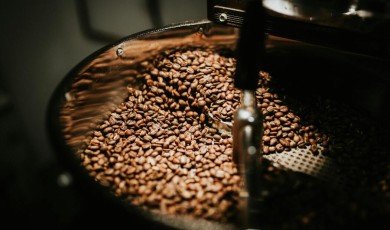
Artificial intelligence is rapidly transforming the way we experience beverages, from everyday coffee and soft drinks to fine wines and craft cocktails. Behind the scenes, advanced algorithms are tasting data instead of liquids, spotting subtle chemical patterns that many human palates miss. The result is a new generation of drinks designed with unprecedented precision—where flavor, aroma, and even mouthfeel can be predicted, adjusted, and optimized long before a single batch is bottled.
This new wave of digital flavor discovery is powered by modern AI tools that analyze everything from ingredient combinations and fermentation profiles to consumer feedback and market trends. As beverage makers search for ways to stand out in a crowded marketplace, these systems are becoming essential for uncovering distinctive taste signatures, guiding experimentation, and reducing the guesswork that once defined recipe development.
1. Flavor Mapping Engines Transforming Recipe Development
One of the most impactful applications of AI in beverages is flavor mapping. These systems ingest chemical analysis data, sensory panel scores, and historical recipes to create a multi-dimensional “map” of flavors. Instead of relying on trial and error, product developers can navigate this map to identify new combinations that are both distinctive and commercially viable.
By modeling how ingredients interact—such as acids balancing sweetness, or aromatic compounds enhancing perceived freshness—AI can pinpoint blends that would be difficult to discover manually. This accelerates innovation cycles and opens the door to drinks with truly unexpected yet harmonious taste profiles.
2. AI-Driven Sensory Prediction for Taste, Aroma, and Texture
Sensory panels are expensive and time-consuming, but they are traditionally the gold standard for evaluating drinks. AI systems trained on extensive sensory data can now predict how a beverage will be perceived by human tasters based on its composition. They estimate attributes like sweetness, bitterness, creaminess, acidity, and aroma intensity before the product ever reaches a tasting room.
This predictive capability allows researchers to iterate digitally, refining multiple virtual prototypes before selecting a handful of promising candidates for actual production. The result is fewer physical test batches, less waste, and a much faster path from concept to market-ready beverage.
3. Smart Ingredient Pairing Engines for Unique Combinations
Innovative ingredient pairings—think smoky tea with citrus bitters, or herbal tonics with tropical fruit—often rely on intuition and experimentation. AI models can now scan enormous databases of ingredients, flavor compounds, and historical recipes to propose novel pairings that share complementary chemical or sensory characteristics.
These engines don’t just look at what has worked in the past; they actively search for gaps where promising combinations have not yet been explored. For beverage brands, this means discovering fresh, signature blends that stand out on crowded shelves without sacrificing drinkability or balance.
4. Data-Driven Personalization for Local and Niche Tastes
Consumer preferences vary dramatically by region, culture, and even season. AI allows beverage makers to localize flavor profiles by analyzing sales data, online reviews, and social media commentary in specific markets. Patterns in this data reveal, for example, that one city favors more bitterness in its craft beers, while another leans strongly toward sweeter, fruit-forward profiles.
With these insights, brands can customize recipes or create market-specific variants that feel tailor-made for local tastes. Personalization can also extend to niche communities—such as fans of low-sugar sodas or botanical spirits—ensuring that each group receives products aligned with its particular flavor expectations.
5. AI-Guided Fermentation and Aging for Complex Drinks
In categories like beer, wine, kombucha, and aged spirits, fermentation and maturation dramatically influence the final flavor. AI tools monitor factors such as temperature curves, yeast strains, pH levels, and oxygen exposure to predict how these variables shape aroma and taste over time.
With predictive models, producers can simulate different fermentation strategies before committing to a large batch. They can determine how minor changes—like a slightly longer aging period or an adjusted fermentation temperature—might deepen desirable notes (such as vanilla, stone fruit, or toast) or reduce unwanted ones (like harsh bitterness or sulfur). This fine-tuned control leads to more consistent, complex, and distinctive beverages.
6. Automated Label and Menu Optimization Based on Flavor Data
The way a drink is described on a label or menu can strongly influence how consumers perceive its flavor. AI text analysis tools study which descriptors—such as “zesty,” “velvety,” or “citrus-forward”—correlate with higher interest and better reviews for specific product types. They then recommend language and design elements that accurately capture the taste while appealing to target audiences.
This ensures that bold, unusual flavors are communicated clearly and enticingly, helping adventurous consumers find drinks they’ll love, while avoiding confusion or mismatched expectations. Over time, feedback loops refine the wording, further aligning flavor experience with marketing messages.
7. Quality Control Systems that Protect Signature Flavors
Once a drink’s unique flavor profile is established, maintaining that signature across batches is critical. AI-powered quality control systems continuously analyze production data—ingredient quality metrics, microbiology results, and process parameters—to detect early signs of deviation.
By comparing live data to historical baselines for successful batches, these systems can flag potential problems before they become noticeable in the glass. Whether it’s a subtle shift in acidity or a missing top note in the aroma, automated oversight helps ensure that the distinctive character consumers expect remains intact over time.
8. Trend Forecasting to Inspire Tomorrow’s Signature Drinks
Taste trends move quickly, influenced by social media, wellness movements, and global cultural exchange. AI trend-forecasting platforms aggregate information from search behavior, restaurant menus, influencer content, and retail performance to highlight rising ingredients and flavor directions.
Beverage developers can use these insights to stay ahead—experimenting with emerging botanicals, functional ingredients, or cross-cultural flavor fusions before they go mainstream. This proactive approach makes it easier to design the next wave of iconic drinks that feel both original and perfectly timed to consumer curiosity.
Conclusion: A New Era of Data-Designed Flavor
As artificial intelligence continues to evolve, its role in beverage creation is shifting from a back-end efficiency booster to a central driver of flavor innovation. From mapping ingredient interactions and predicting sensory outcomes to personalizing recipes for diverse markets, AI is unlocking taste experiences that would have been difficult to imagine using traditional methods alone.
For brands, embracing these technologies means more than keeping up with competitors—it’s a way to craft distinctive, data-informed beverages that resonate deeply with modern drinkers. For consumers, it promises a future where every sip carries the benefit of advanced analysis and creative experimentation, revealing flavors that are both surprising and precisely tuned to evolving preferences.







